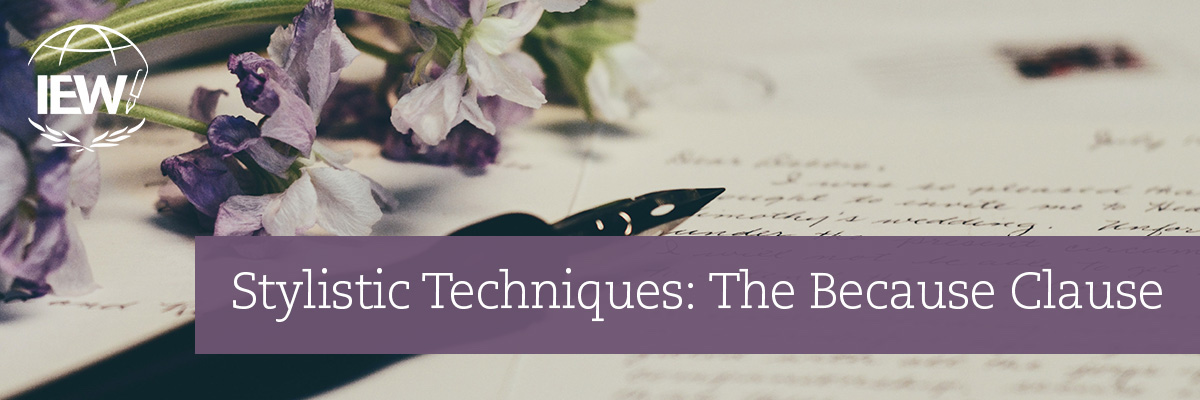
This week’s featured stylistic technique is the because clause dress-up. After learning the -ly adverb, who/which clause, and strong verb dress-ups, it is the next to be introduced. A clause must contain both a subject and a verb. The because clause is a dependent (subordinate) clause, meaning it cannot stand alone as a complete sentence. Let’s use a chair for illustration. A dependent clause is a bit like trying to stand up a chair that only has two legs. Invariably, it will fall over. It needs that third leg of a main clause in order for it to express a complete thought. Only then can the sentence stand on its own.
In the Seminar Workbook, the syllabus of the Teaching Writing: Structure and Style® Second Edition course, the because clause dress-up is addressed on page 173 and is described during the second video segment. You can also learn more about it by watching the archived webinar “Sailing through Style,” but to get the best understanding of how to teach the because clause to students, I highly recommend that you watch Andrew demonstrate. He is a master at teaching his students to integrate these stylistic elements into their writing. You can view him working with his classes in the Structure and Style for Students programs. You can try three weeks of lessons for free at IEW.com/free-lessons.
When I teach my students, I introduce this dress-up similarly to how I introduce the who/which clause. I begin with a basic sentence. Here’s one to play around with:
Mrs. Mauser baked chocolate chip cookies.
The because clause dress-up adds information that explains why. I pose the question to my students: Why did I bake chocolate chip cookies? As they supply their thoughts, I write them down on the board:
- because she was hungry
- because it was her birthday
- because friends were on their way over to visit
- because she has a sweet tooth
- because she loves treats
From there it’s a simple matter of tacking on the whys to the end of the sentence. I always model the correct way to indicate the dress-up by underlining the word “because.”
- Mrs. Mauser baked chocolate chip cookies because she was hungry.
- Mrs. Mauser baked chocolate chip cookies because it was her birthday.
I might even supply my own reason why. Mrs. Mauser baked chocolate chip cookies because she wanted to surprise her class with a treat! The kids love it when I pull out a batch of my homemade cookies. Multisensory instruction is one tasty way to make the learning stick! By the way, I have a great chocolate chip cookie recipe. If you are interested, you can grab it here.
While this dress-up is generally easy to learn and apply, there is one tiny area that can cause confusion. Occasionally my students will use the preposition “because of.” Here’s an example of that: Mrs. Mauser baked chocolate chip cookies because of the rainy weather. In this construction you will notice that there is no verb. Without a verb, there is no clause. Instead, what we have is a prepositional phrase. “Because of” functions as a preposition. Very young students frequently forget that. Just keep reinforcing the idea that a because clause dress-up has a subject and a verb. Repeated modeling helps students to grasp the construction, so keep working at it.
|
Jennifer Mauser has always loved reading and writing and received a B.A. in English from the University of Kansas in 1991. Once she and her husband had children, they decided to homeschool, and she put all her training to use in the home. In addition to homeschooling her children, Jennifer teaches IEW classes out of her home, coaches budding writers via email, and tutors students who struggle with dyslexia. |

